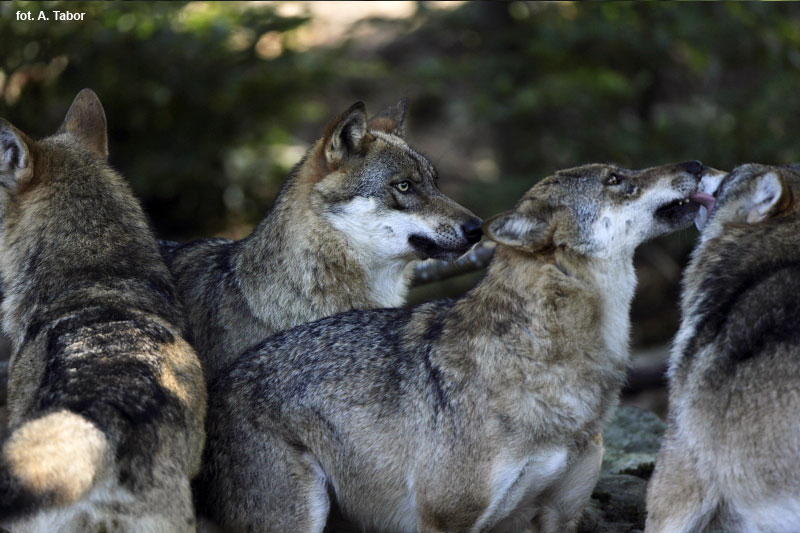 Like most baby animals, young wolves do not stay with their parents forever. Some start migrating as early as ten months. But most stay in the pack, until they are almost fully grown at the age of two. Then they are not yet experienced hunters, but at least they got that much experience, that they can get by on their own for a while. More and more frequently and for longer periods, they go on excursions in their parents' territory and sometimes beyond, alone or in small groups. Then they come back and help raise the younger siblings. But something drives her, won't let her rest.
Like most baby animals, young wolves do not stay with their parents forever. Some start migrating as early as ten months. But most stay in the pack, until they are almost fully grown at the age of two. Then they are not yet experienced hunters, but at least they got that much experience, that they can get by on their own for a while. More and more frequently and for longer periods, they go on excursions in their parents' territory and sometimes beyond, alone or in small groups. Then they come back and help raise the younger siblings. But something drives her, won't let her rest.
then, at once, a young wolf sets out. Sometimes he wanders many thousands of kilometers over mountains and rivers, through forests and past human settlements. Always in one direction, as if he had a specific goal. He often uses old "wolf changes", Migration routes of wolves through inaccessible areas, where they usually also find enough game. Yet
many wolves do not survive the migration period. On the way they starve or are attacked and killed by strange packs. Many die today while crossing streets, others are shot by hunters or herdsmen.
But the wolves, who are skilled enough, Dodging enemies and having some luck on their side, don't go on forever. So suddenly, how they left, so quickly they decide one day, to stay in a new area. What makes her do it, we do not know. Perhaps it is a particularly favorable area, which is not occupied by other wolves. Maybe they just got tired of the long journey.
But usually something else is at play: Long ago the wanderer let out his lonely howl at every opportunity, dropped urine splashes everywhere as scent marks, has itself obeyed the sounds of the wolf and searched for the smell of the wolf.
then, one night, the wolf gets an answer to his howl and sees the tracks of another wolf. Exciting times begin. He picks up the scent of a she-wolf. Only slowly does the wolf and the she-wolf approach each other.
The male is the more pushy, the wolf the shyer of the two. She avoids him, is hiding, even flees from time to time. But soon the two just run together. They explore their new territory, escape together from danger hunt together.
And one day, in the winter, they mate. Two months later, when spring comes, the puppies are born in a cave: five, six rounds, small balls, who have nothing else in mind, than to get warmth and milk from their mother. The father goes hunting alone and brings the wolves food. Soon the puppies will get some of it too. They grow up quickly and eventually follow their parents on their forays through the territory. A new pack of wolves has emerged.
The size of a pack
Wolf packs are not the same size everywhere. The larger and more defensive the victim is, the more experienced hunters the pack needs. In areas, in which the wolves hunt powerful prey such as elk or bison, can you up to 20 Count animals and more. Where the prey is medium sized, such as. deer or wild goat, the packs are usually only eight to ten animals strong. And where only small prey like rabbits and beavers are found, usually keeps only one pair together.
The bigger the booty, the more wolves can be fed from it. With a feed requirement of 4 kg per wolf and day is sufficient 400 kg heavy moose for 20 wolves for five days. In addition to the hunters, the puppies and the still clumsy young wolves can also be fed up with the prey several times. Of a 80 kg heavy deer, on the other hand, become ten wolves two days and one 20 kg heavy deer hardly fed five wolves for a day.
Thus, the size of a wolf pack depends on the one hand on the need for experienced hunters and on the other hand on the amount of meat, which delivers the killed prey.
It's always better for hunting, if several hunters participate. When eating, more falls away for everyone, if as few animals as possible share the prey.